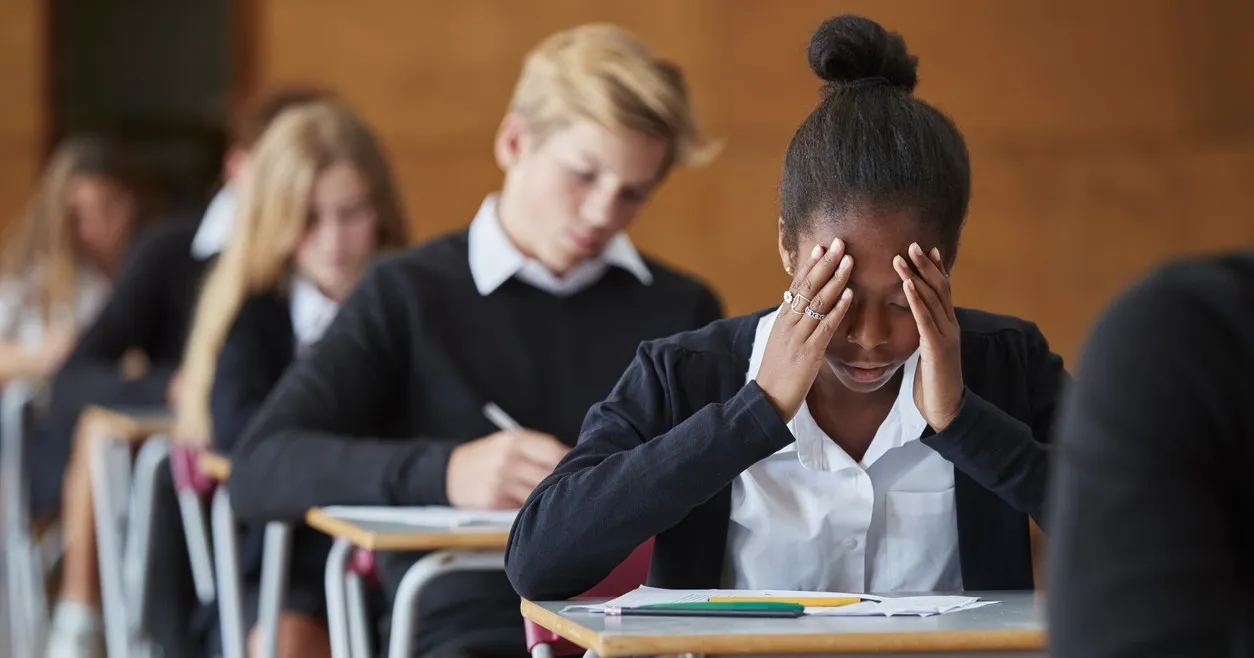
“We test the children’s learning with admittedly limited instruments—standardized tests—that were never designed to be used as a standalone analysis.”
The use of standardized testing in American education comes with widespread debate. Pros and cons are batted back and forth like a tennis ball on the court of public opinion and educational policy.
In this two-part series on standardized testing, the pros and cons of this flashpoint topic offer a fascinating glance into a complex issue. Part One explored some of the common arguments for standardized testing and examined four specific benefits:
- Uniformity
- Comparisons and Accountability
- Individual Progress Charted
- Span Various Educational Options
This peek into the positive side of standardized testing can be found here.
This follow-up post will give opponents their time in the spotlight. Critics of standardized testing offer valid objections for you to consider in deciding the best approach for your kids. So without further ado…the cons of standardized testing.
“Education is the fundamental principle of what makes America a success. It is the foundation of what truly makes our country ‘The Land of Opportunity.’”
Objections to Standardized Testing
1. It Discriminates Against Bad Test Takers
Many students do not perform well under pressure in a standardized testing environment. As a result, students who excel at test taking have a clear advantage over students who do not.
Standardized tests don’t necessarily measure a student’s knowledge and skills. Instead, they reward those who are good at taking tests under stressful conditions. Unfortunately, this testing fails to accurately assess a student’s abilities in other crucial areas such as critical thinking or innovative problem-solving.
Educational Researcher published a study in 2018 showing that male and female students consistently perform differently based on test format. Multiple choice questions repeatedly favored male students, while female students excelled with open-ended questions.
The study concluded that differences in question formats explain approximately 25% of the variation in achievement gaps across states and districts. This leads to questions concerning the accuracy of the tests’ data.
Many also argue that students who consistently underperform on standardized tests are negatively impacted emotionally and mentally. Self-confidence often plummets as test after test fails to accurately reflect their true abilities and knowledge.
Spark Admissions further explores this problem: “… Standardized testing causes otherwise successful students to lose confidence in themselves and their abilities. Many students suffer from test anxiety, meaning that they do not perform at their usual level because they find the experience of test-taking so stressful.”
2. It Negatively Impacts Teachers
Critics of standardized testing have noted that the tests have a negative impact on teachers themselves. American University’s School of Education outlines a few of these objections:
-
The need to meet specific testing standards pressures teachers to “teach to the test” rather than providing a broad curriculum.
-
Teachers have expressed frustration about the time it takes to prepare for and administer tests.
-
Teachers may feel excessive pressure from their schools and administrators to improve their standardized test scores.
-
Standardized tests measure achievement against goals rather than measuring progress.
-
Achievement test scores are commonly assumed to have a strong correlation with teaching effectiveness, a tendency that can place unfair blame on good teachers if scores are low and obscure teaching deficiencies if scores are high.
Quote taken from “Effects of Standardized Testing on Students & Teachers.”
As The National Center for Fair and Open Testing points out, quality teaching and effective learning will continue to decline as educators’ careers ride on test data instead of worthy teaching methods. Also noted is the concern that these conditions will continue to drive current teachers from the workplace, and will also deter “strong young candidates from becoming teachers or principals” as well.
Education Week observes that good teachers work with their students through all the variables of learning. Teachers know their students inside and out; they recognize strengths and weaknesses far more effectively than the tests. With this in mind, it’s unfair to penalize both teacher and student based on a partial picture of progress.
3. It Identifies Weaknesses While Neglecting Strengths
Another objection to standardized testing is that it merely identifies a student’s weaknesses. With its limited scope of evaluation, this testing ignores a student’s strengths.
Psychology Today summarizes this con: “The only thing that standardized tests can measure is whether or not a student falls short … The best thing a standardized test can say about you is that you don’t possess readily identifiable weaknesses. Standardized tests only measure the absence of weakness. They do not measure the presence of strength.”
Similarly, there is a rising concern that even positive test scores may not actually reflect a student’s true knowledge. Researchers from King’s College London published a 2015 study with unintended implications concerning the reliability of test results.
“If students do increasingly better on their standardized tests, a question arises- are students improving their broader learning or are the higher scores a result of teaching to the test?” questions Sites at Penn State. “The stronger the pressure for teachers to improve their students’ test scores, the more likely teachers are to resort to questionable measure to do so… Interestingly, educators teaching in schools with increasing test scores feel the most pressure in comparison to schools with stagnant or decreasing test scores.”
However, Psychology Today ends their earlier objection with a positive note, “This is not, however, a definite argument against standardized tests. There is one kind of strength they can measure: how well a student takes standardized tests. That shouldn’t be the only kind of strength we’re interested in. But it shouldn’t be discarded either.”
4. It Creates Classroom Inequality
“Students want to succeed, and teachers want their students to succeed, and academic success is, now more than ever, measured in terms of test scores … Tests have always ranked students, but in the age of standardized testing, tests also rank not only public school teachers but public schools themselves …” This excerpt from Salon.com underlines another major problem with standardized testing in education.
Standardized testing has a limited view of successful learning and improvement. Instead of looking at each student as a whole person, it breaks the child down into specific academic sub-categories such as math or writing. As a result, the test data can give a skewed view of a student. This can leave some students to learn on their own while others receive undue attention from the teacher.
Good teachers will work to give their more “difficult learners” a better chance at doing well on their standardized tests. Because of this, teachers may offer these students extra attention in order to help them prepare and study.
As noted in an earlier point, teachers’ job security is often linked to test results as well. This, combined with a genuine interest in their students’ well-being, may result in classroom inequality.
“Based on the classroom grades achieved, a teacher might receive a raise or be fired from their job. This creates a host of learning problems,” explains finance blog Vittana. “For starters, only the students who are performing poorly on testing simulations receive a majority of the attention from the teacher, leaving good students to fend for themselves. Teachers then begin to ‘teach to the test’ instead of teaching subject materials to obtain needed results.”
Standardized testing has shifted the emphasis of education from “learning” to “passing.” As a result, the focus of teachers in the classroom has shifted as well. Standardized tests tend to create a competitive learning environment that can be detrimental to academic success, quality teaching, and effective learning.
Standardized Testing: A Balance
Standardized testing is more than likely not going anywhere. As a general measure of assessment for students, teachers, and schools, advocates and critics alike acknowledge that the tests have at least some value. The trick seems to be developing a balance between valid uses for the test data and allowing for other methods of assessment.
VitaEducation notes that, for at least some critics, standardized tests themselves aren’t even the larger issue. Instead, it’s how the results are used: “Many objections voiced by the anti-testing movement are really objections to NCLB’s (No Child Left Behind) use of test results, not to standardized tests themselves.”
Walt Gardener of EducationWeek suggests that the US model their use of standardized testing after that of Finland. He notes that Finland uses “standardized tests strictly for diagnostic purposes, and never makes the results public.” As a result, teachers and students benefit, while reaping none of the anxiety so often observed with American testing.
Critics of standardized testing have offered numerous solutions for a more balanced use of test results. Whether Finland’s approach is the answer or not, it seems obvious that both the pros and cons for standardized testing have merit.
Standardized testing is a helpful tool, though certainly not comprehensive. When combined with data from other sources, it can offer insightful context. For people with students’ well-being in mind, a good balance seems to be the ultimate goal.
Whitby School sums this up nicely: “Standardized testing is truthfully a very difficult issue because we do need internal and external assessments to measure student success … Schools and parents should always look at standardized tests not as a value judgment on the student, but as an additional data point that can provide some perspective on student learning.”
Did you miss the first part of this discussion? Read part one here.
The Noah Webster Educational Foundation believes in implementing evidence-based instructional practices in America’s classrooms. Want to join the national education conversation? Check out our resources and sign up for updates at nwef.org.





[…] of how you feel? Learn more about the pros and cons of standardized testing, and let us know what you […]
[…] Debates surrounding standardized testing cite a long list of positives and negatives. […]
[…] of standardized tests still draws debate. On the courts of public opinion and educational policy, pros and cons are batted back and forth like a tennis […]
[…] Don’t miss the second part of this discussion: read about the pros of standardized testing Part 2 here. […]
[…] Pros & Cons of Standardized Testing (& Part 2) […]
[…] of standardized tests still draws debate. On the courts of public opinion and educational policy, pros and cons are batted back and forth like a tennis […]